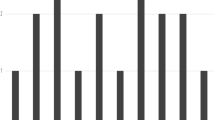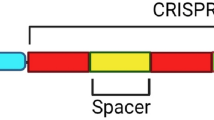
Overview
- Summarizes the latest advances in genome sequencing and analysis
- Demonstrates how plant genomics can be used to improve plant breeding
- Provides insights for researchers in plant breeding, genetics, physiology, taxonomy, and biochemistry
Part of the book series: Compendium of Plant Genomes (CPG)
Buy print copy
About this book
This book summarizes recent advances in carnation genome research for large-scale transcriptome analysis, the draft genome sequence, DNA markers and genome mapping, flower color, mutations, flower opening, vase life, interspecific hybridization, fragrance.
The carnation is one of the most important ornamental flowers in the world, along with the chrysanthemum and the rose. The genus Dianthus is a member of the Caryophyllaceae and includes more than 300 species of annuals and evergreen perennials. Modern carnation cultivars are the product of highly complex hybridization, owing to their long history of breeding.
The carnation genome was first sequenced in ornamentals by a Japanese research team in 2013. The carnation has been genetically improved over the years, and there are various types of flower colors, shapes, patterns, and sizes. In this book, the molecular mechanism of flower color development and the transposable elements responsible for this diversity are studied in detail. In addition, it presents breeding and physiological research for improving flower vase life, one of the most important traits in ornamentals, based on a model of ethylene susceptible flowers. To improve selection efficiency, genomic analysis tools including DNA markers and genetic linkage maps are also highlighted. In closing, the book discusses mutation breeding technologies such as ion-beam irradiation and genetically modified carnations.
Similar content being viewed by others
Keywords
Table of contents (13 chapters)
-
Front Matter
Editors and Affiliations
About the editors
Institute of Vegetable and Floriculture Science, NARO, Japan
Masafumi Yagi
Institute of Vegetable and Floriculture Science, NARO, Japan
Bibliographic Information
Book Title: The Carnation Genome
Editors: Takashi Onozaki, Masafumi Yagi
Series Title: Compendium of Plant Genomes
DOI: https://doi.org/10.1007/978-981-15-8261-5
Publisher: Springer Singapore
eBook Packages: Biomedical and Life Sciences, Biomedical and Life Sciences (R0)
Copyright Information: Springer Nature Singapore Pte Ltd. 2020
Hardcover ISBN: 978-981-15-8260-8Published: 18 December 2020
Softcover ISBN: 978-981-15-8263-9Published: 19 December 2021
eBook ISBN: 978-981-15-8261-5Published: 17 December 2020
Series ISSN: 2199-4781
Series E-ISSN: 2199-479X
Edition Number: 1
Number of Pages: XXII, 183
Number of Illustrations: 25 b/w illustrations, 60 illustrations in colour
Topics: Plant Genetics and Genomics, Plant Breeding/Biotechnology, Plant Physiology, Plant Systematics/Taxonomy/Biogeography



